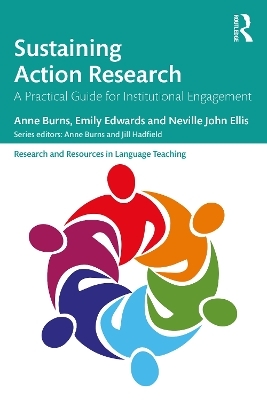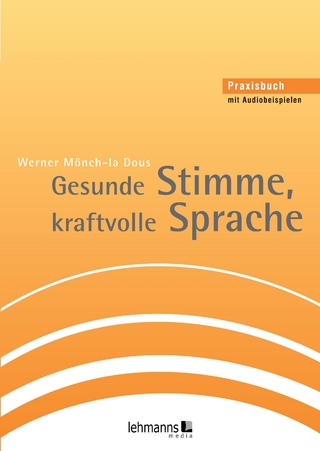
Sustaining Action Research
Routledge (Verlag)
978-0-367-21065-6 (ISBN)
Anne Burns is a part-time Professor at Curtin University, WA, and is a Professor Emerita at Aston University, UK. She is an Honorary Professor at the University of New South Wales, The University of Sydney and The Education University, Hong Kong. Emily Edwards is a Lecturer in Academic Language and Learning at the University of Technology Sydney, Australia. Neville John Ellis is an Honorary Lecturer at the University of New South Wales, Australia.
Table of Contents
Part 1: From Research to Implications
Introduction to Part 1
Action research as transformative practice
What is Action Research?
Action research as transformative practice
Action research as a form of professional learning and development
A sociocultural ecological framework
Introduction to the theory
Sociocultural theory
Ecological systems theory
The environment for development
The teaching context
The action research program or project
Tools and mediation
Teacher development
Teacher agency and identity
The sustainability of action research
Implications of sociocultural ecological theory for the action research practice we are proposing
Design phases for supporting and sustaining action research
Challenges and barriers facing teacher action research
Design phases for action research in institutions
Part 2: From Implications to Application
Introduction to Part 2
Sequencing
The top-down vs. bottom-up balance
Activity structure
Activity set A: Needs analysis for AR
Introduction to Activity set A
Sequencing of the activities
Activity A1: Do we have any AR experience?
Activity A2: What are our beliefs about research?
Activity A3: What is AR?
Activity A4: Is it AR or something else?
Activity A5: How confident do we feel about AR?
Activity A6: How could AR fit into our institutional PD goals for the year?
Activity A7: What are the teachers’ PD goals for the year?
Activity A8: How can we use an existing PD framework to set goals?
Activity A9: How can we collate our needs analysis ideas?
Activity A10: Should we have a working party for designing and planning AR?
Activity set B: Designing and planning AR
Introduction to Activity set B
Sequencing of the activities
Activity B1: How do we design a framework for our AR initiative?
Activity B2: What institutional resources can be included?
Activity B3: What are our expectations of working in this AR group?
Activity B4: Will we need any AR mentors?
Activity B5: Will any ‘critical friends’ be involved in the AR?
Activity B6: How do we generate ideas for AR topics?
Activity B7: How can we align our AR topics with institutional needs?
Activity B8: How do we develop AR questions?
Activity B9: How do we make AR project plans?
Activity B10: How can we review our AR plans?
Activity B11: How can we get feedback on our AR plans?
Activity B12: Does our planned AR align with institutional needs?
Activity B13: How much time will we need?
Activity B14: What ethical issues do we need to consider?
Activity B15: What do we need to learn about data collection?
Activity B16: How will we share our AR findings?
Activity B17: Is our AR initiative sustainable?
Activity set C: Implementation and support
Introduction to Activity set C
Sequencing of the activities
Activity C1: Ready to go!
Activity C2: What are the qualities of a good mentor?
Activity C3: How can we set clear expectations for working with an academic partner?
Activity C4: How can we organise group meetings?
Activity C5: How can we make a data collection plan?
Activity C6: Should we start with exploration or action?
Activity C7: What will the experience of AR be like?
Activity C8: How can we organise our data for analysis?
Activity C9: How can we analyse qualitative data?
Activity C10: How can we analyse quantitative data?
Activity C11: How and when is reflection included in AR?
Activity C12: How can we share and reflect on our emotional experiences of conducting AR?
Activity C13: How can we give each other emotional support?
Activity C14: How can we solve problems when working with academic partners?
Activity set D – Sharing AR with the school community
Introduction to Activity set D
Sequencing of the activities
Activity D1: How can we share what we’re learning from our AR projects?
Activity D2: How can we keep the school community updated?
Activity D3: How can we share our research findings at a staff meeting?
Activity D4: How can we organise an AR event in our school?
Activity D5: How can we use posters to share our AR findings?
Activity D6: How can we organise a practical workshop to promote AR findings?
Activity D7: How can we celebrate successes as well as challenges and uncomfortable truths?
Activity D8: How can we use our findings to improve school practice?
Activity set E – Sharing AR with the broader community
Introduction to Activity set E
Sequencing of the activities
Activity E1: How can we write an abstract for a conference?
Activity E2: How can we create our presentation?
Activity E3: How can we prepare for and practice our presentation?
Activity E4: How can we write a practice-oriented article?
Activity E5: How can we write an academic journal article?
Activity E6: How can we get involved with broader communities?
Activity set F – Planning the next steps
Introduction to Activity set F
Sequencing of the activities
Activity F1: How can participants reflect on the AR processes?
Activity F2: How can we get student feedback about the AR project or initiative?
Activity F3: How can we review our AR and adapt our framework for the next iteration?
Activity F4: How can we align the next steps we have planned with our ongoing PD goals?
Activity F5: How can we celebrate what we’ve achieved through our experience of AR?
Part 3: From Application to Implementation
Introduction to Part 3
An ecological view of the teaching context
Towards whole-school change and research cultures
Enabling factors for AR
The structure of Part 3
Micro level: individual teachers or small groups
What people would be involved at this level and how could they work together?
What would the educational goals or purposes of AR be at this level?
What could the enablers for AR be at this level?
Summary of micro level AR benefits and challenges
Meso level: whole of institution
What people would be involved at this level and how could they work together?
What would the educational goals or purposes of AR be at this level?
What could the enablers for AR be at this level?
Summary of meso level AR benefits and challenges
Macro level: communities of practice across institutions
What people would be involved at this level and how could they work together?
What would the educational goals or purposes of AR be at this level?
What could the enablers for AR be at this level?
Summary of macro level AR benefits and challenges
Part 4: From Implementation to Research
Introduction to Part 4
Classroom, teacher, and action research
A "family" of approaches
Reflective practice
Exploratory Practice
Exploratory action research
Self-study
Design-based research
Lesson study
Other terms and approaches
Carrying out research in your institutional context
Research at the micro-level
Research at the meso level
Research at the macro-level
Conclusion and final thoughts
Reference list
| Erscheinungsdatum | 01.04.2022 |
|---|---|
| Reihe/Serie | Research and Resources in Language Teaching |
| Zusatzinfo | 7 Line drawings, black and white; 7 Illustrations, black and white |
| Verlagsort | London |
| Sprache | englisch |
| Maße | 152 x 229 mm |
| Gewicht | 580 g |
| Themenwelt | Schulbuch / Wörterbuch ► Wörterbuch / Fremdsprachen |
| Geisteswissenschaften ► Sprach- / Literaturwissenschaft ► Sprachwissenschaft | |
| Sozialwissenschaften ► Pädagogik ► Erwachsenenbildung | |
| ISBN-10 | 0-367-21065-7 / 0367210657 |
| ISBN-13 | 978-0-367-21065-6 / 9780367210656 |
| Zustand | Neuware |
| Haben Sie eine Frage zum Produkt? |
aus dem Bereich


